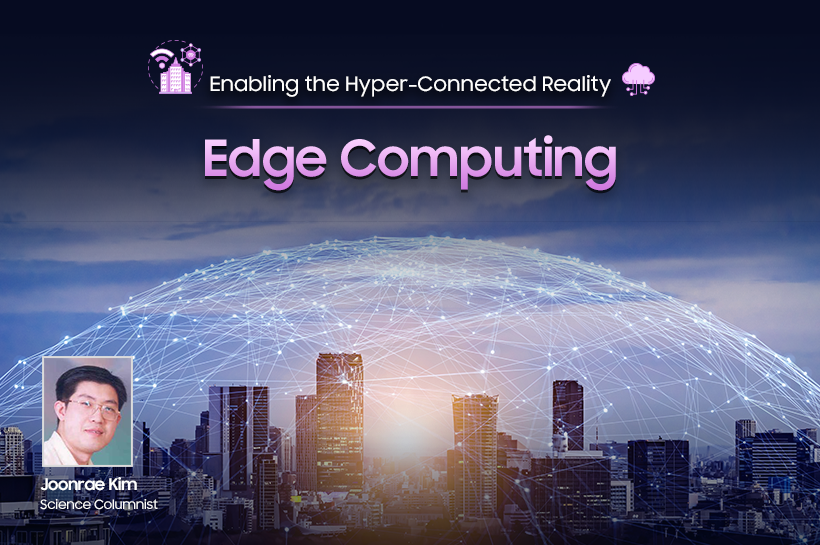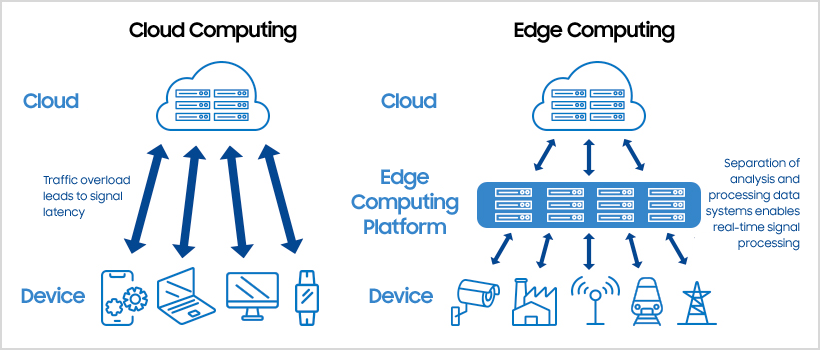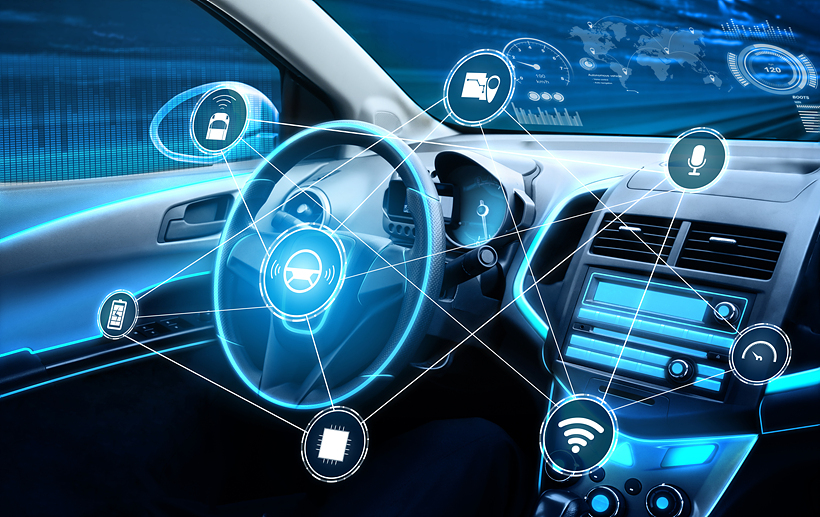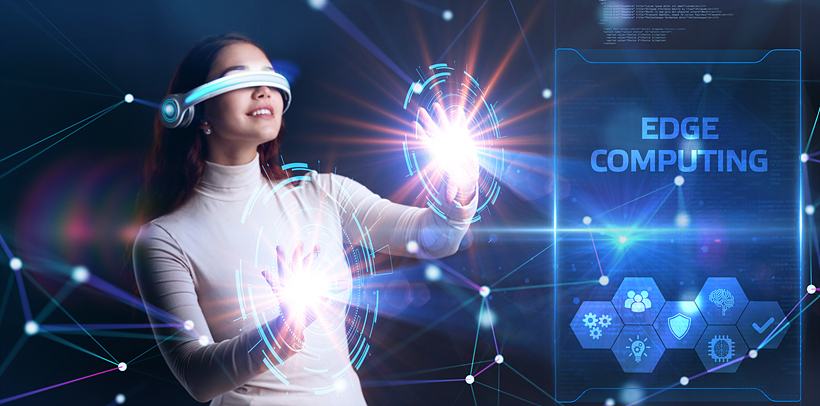
“Be edgy, alright?” It used to be a popular K-drama catchphrase a few years ago, where the protagonist, who is a fashion designer, would iterate it to her coworkers. Her use of the word conveys a commitment to designing a fashion style that leaves a strong impression on others like ‘the sharpened side of the blade’. The word ‘edge’ is typically used to describe an object’s border.
Edge computing is a distributed information technology architecture that contributes to a cloud by bringing computing closer to the sources of data with the most advanced system. Artificial intelligence, big data, and the internet of things (IoT) are becoming more prevalent with the use of the 5G mobile network and have contributed to the increased public awareness of edge computing due to its ability to combat latency and reduce bandwidth usage more effectively than cloud computing.
Disadvantages of Cloud Computing in the Past?
Centralized data processing refers to data processing performed in the central computer. Just like a cloud in the middle of the sky, cloud computing works on a centralized server resource that is hosted and delivered over a network that processes and saves data. Many IT companies have strategically provided cloud services due to its accessibility and convenience for storing and accessing data dynamically.

However, with use of the cloud services rocketing, several issues surfaced. The exponential growth led to data overload at cloud servers and data centers. Security vulnerabilities also exacerbated the need for a better data processing system, which led to Edge Computing.
Edge computing is a new technology that tackles latency and bandwidth issues using a distributed paradigm that brings memory, applications, and other types of computing closer to the sources of data. Whereas cloud computing relies on a centralized server, edge computing can even process data on mobile communication devices like smartphones.
The Role of Edge Computing in Autonomous Driving
Edge computing’s most common use case is ‘autonomous vehicles’, the future of mobility. Because self-driving cars process the road/pedestrian/traffic sensor data in real-time, it is an exemplary model for IoT-enabled devices. IoT technology allows these automobiles to make reactive judgements based on the surroundings.
Autonomous driving wouldn’t work in a cloud computing environment since it takes time to send the data collected on the road and receive analyzed information. Meanwhile, edge computing removes any complications regarding data processing. Should a car detect a person crossing while driving, it would instantly recognize the situation and transfer the data to stop the car with brakes.

Communication service failures exist even as we are living in a 5G-era. This debilitates cloud-based self-driving cars. Reliance on edge computing is proven to be safer since even without a network, it can make autonomous decisions based on data analysis.
Due to its irreplaceable applications on safety measures on autonomous vehicles, edge computing is being used more expansively to ensure a smooth and secure transportation system. Cities like Las Vegas have deployed edge computing in 2018 to deliver smart traffic management systems. Las Vegas is in fact in preparation of an upgraded system that addresses issues based on accumulated insights; if all goes according to plan, Las Vegas will have reduced traffic congestions.
Ensuring Employee Safety with Edge Computing
Adoption of edge computing has been active in Korea as well. From monitoring worker safety in manufacturing to preventing contamination at environmental sites, edge computing deployment in various industries has been notable.
Industrial edge computing can be found in the diagnosis of switchboards or employee safety monitoring. For example, Korea Industrial Complex Corporation’s smart factories implemented edge computing and analyzes thermal images and temperature based on data collected by IoT devices to detect switchboard fires and power cut-off accidents in advance. Helmet detection using edge computing also prevents human casualties on-site by measuring the body temperature, brain waves, and heart rate of individuals.

Smart factories will continue to evolve by deploying edge computing in environmental sustainability other than securing employee safety. Predictive maintenance of the water purification process and autonomous emission monitoring using virtual sensors are the future of smart manufacturing. Another exciting update made by the Korea Institute of Civil Engineering and Building Technology is the real-time flood prediction system using edge computing. This system helps forecast and carry out necessary flood emergency responses.
Edge Computing in Metaverse?
Another promising area for edge computing is Metaverse. Metaverse is a combination of the prefix “meta” (meaning beyond) and “universe” (meaning reality) - defining virtual reality on another level.
The rise of Roblox, one of the key pioneers of the Metaverse, helps explain how crucial edge computing technology is within the upcoming industry. Roblox is the world’s largest Metaverse platform with more than 164 million monthly users and 5.7 million concurrent users during the platform's all-time peak usage in May 2021.

An immersive experience where users genuinely feel connected to the virtual world that they share with others is the key to a successful Metaverse platform. That sense of connection is what draws them to the virtual universe. However, people use various IT devices to connect online. Some may use their smartphones while others depend on their laptops or tablet PCs. In other words, what the users experience in the Metaverse may be affected by the device’s performance.
Another factor to consider is the fact the number of concurrent Metaverse platform users can vary anywhere between millions to hundreds of millions. Only edge computing systems that can handle the surge of data simultaneously and deliver a consistent user experience across all IT devices can offer a world-class Metaverse ecosystem.
COVID-19 contributed to the recent popularity of Metaverse services in remote education, shopping, healthcare and social contents and is anticipated to carry out even more aspects of our daily life online. Flexibility in terms of your choice of device to connect (smartphones, laptops, mixed reality devices, etc.) will be necessary for seamless simulations in the future and edge computing is an emerging technology for that realization.
Edge Computing: Blue Ocean Industry in the AI Era
Despite its many advantages as demonstrated in use cases above, edge computing has some drawbacks. Hefty expenses compared to cloud computing services hinders many from edge computing deployment. Since autonomous vehicles try to fit as many IoT devices as possible for an accurate and reliable driving experience, it is notable to point out that edge computing’s economic feasibility is lower than that of cloud services.
Nevertheless, companies still have high expectations in the future of edge computing and invest heavily. According to MarketsandMarkets™’s report, the edge computing market is forecasted to grow 26.5% annually over the next five years, reaching $9 billion by 2024 compared to $2.8 billion in 2019.
The potential of edge computing is extremely high in that it is automation meant to improve the way we live. We may one day live to see edge computing commercialized in mobile devices such as smartphones and wearable technologies, revolutionizing every aspect of our lives beyond its implementation in robotics, sensors and IoT devices as the next-generation technology fueling innovation.
※ This article holds the editor’s opinion, and Samsung Display Newsroom’s stance or strategies are not reflected.

